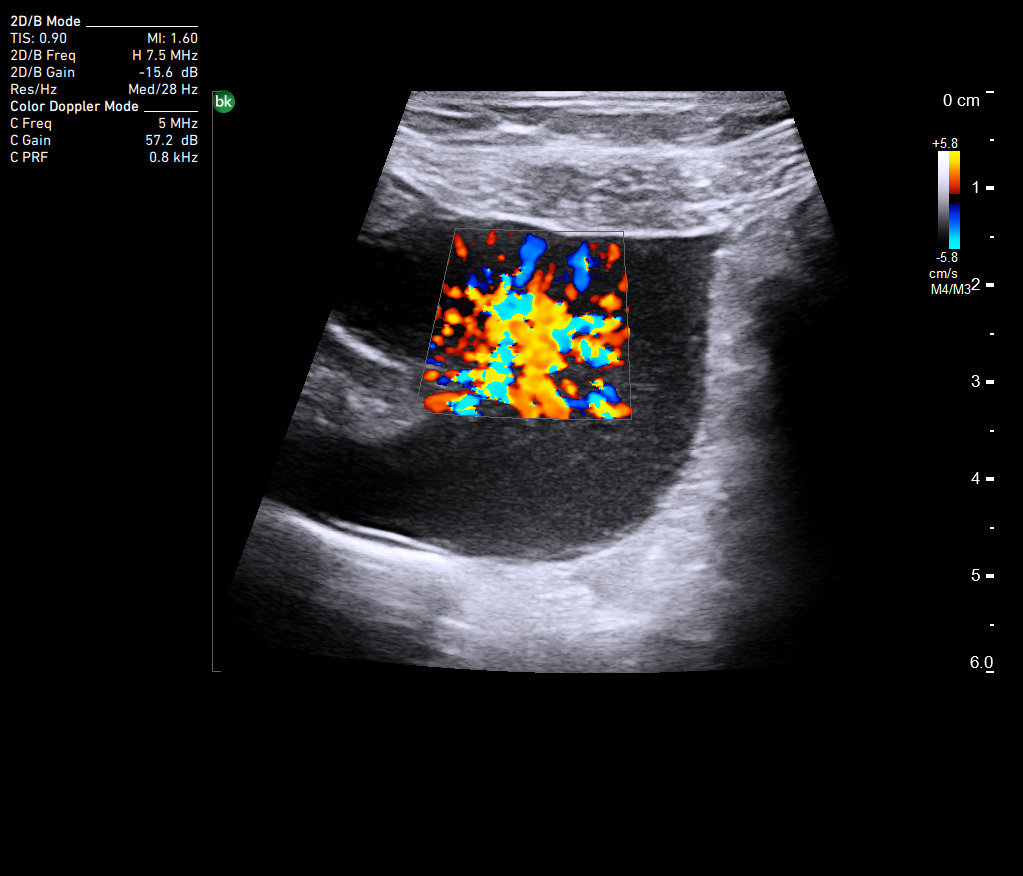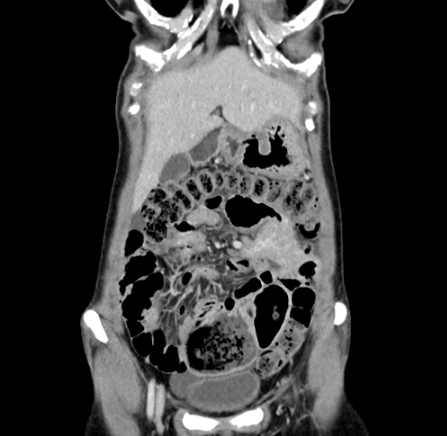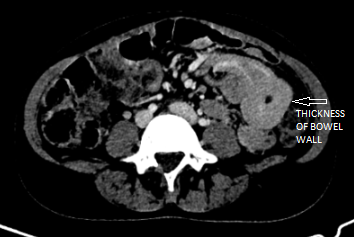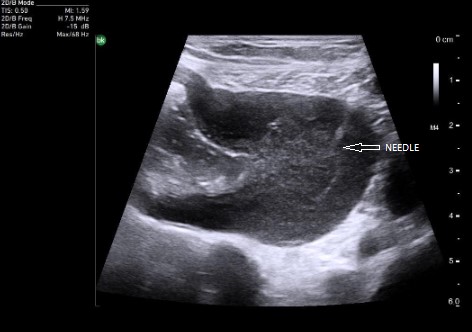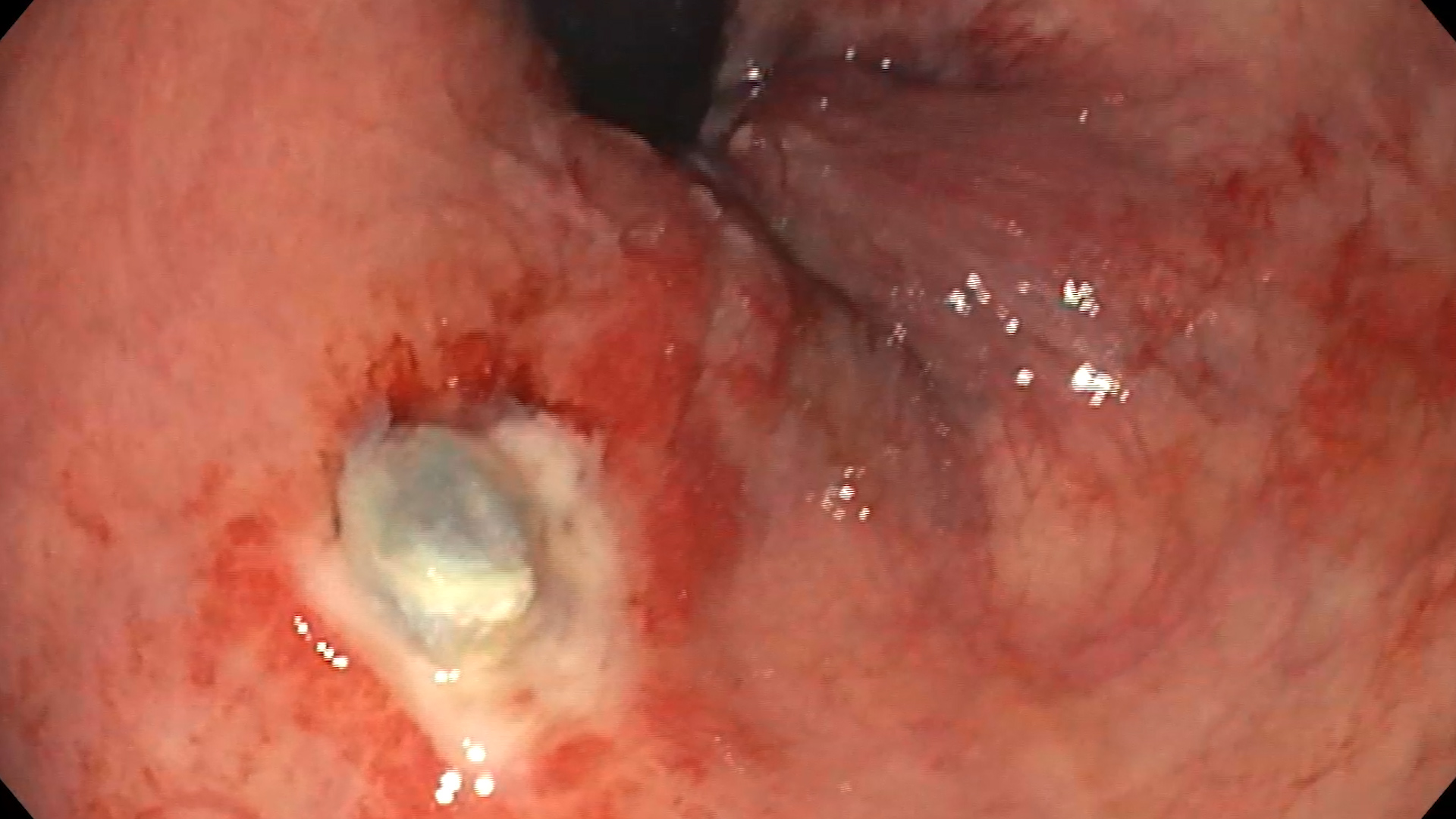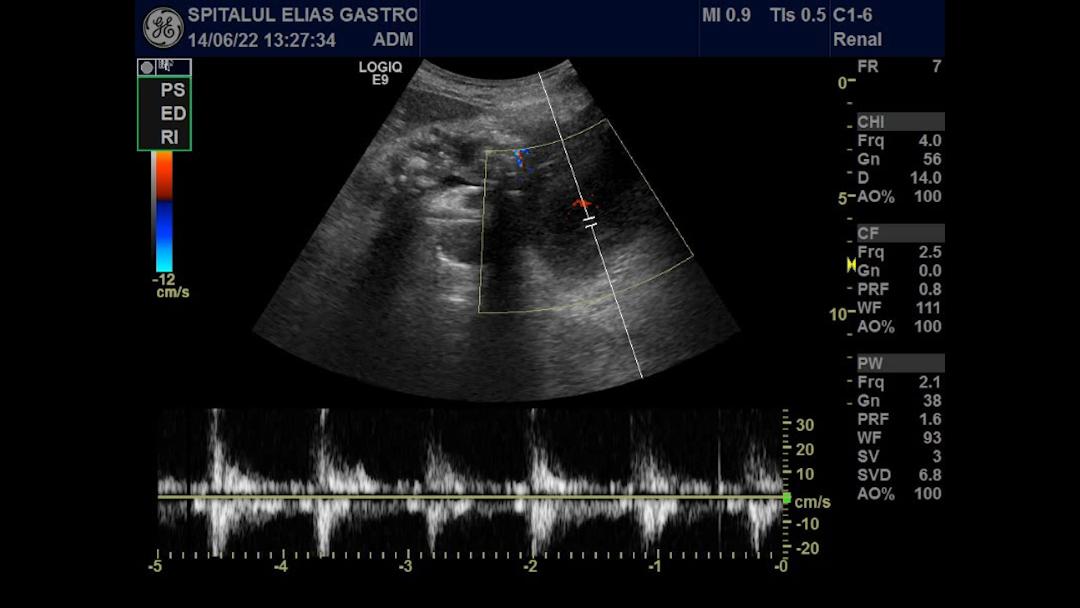See other cases
Intestinal lymphoma
A 41-year-old female patient known with systemic lupus erythematosus, Sjogren syndrome, coeliac disease, that was recently diagnosticated with low-grade intestinal MALT lymphoma (through laparoscopic biopsy) for which she performed 2 sessions of R-CHOP (rituximab-cyclophosphamide-hydroxydaunorubicin-Oncovin-prednisone) therapy, but with progression of the jejunal disease presents with persistent emetic syndrome.
Clinical examination – alopecia, underweight; mild distension in the left abdominal quadrant
Biological – mild anemia (Hb 11,0 mg/dL), hyposideremia
Abdominal ultrasound revealed parietal hypervascular thickening of a small intestinal loop, up to 20 mm, with marked dilatation upstream, multiple perilesional adenopathies and a small amount of ascites (Figure 1). The previously performed abdomen and pelvis contrast-enhanced CT scan is consistent with the ultrasound findings (Figure 2a, 2b).
An ultrasound-guided percutaneous biopsy was performed from the intestinal wall with a 18G needle (Figure 3). The histopathological examination confirmed the presence of lymphoid infiltration with small/medium cells, consistent with the diagnosis of intestinal lymphoma. An immunohistochemical examination was performed and revealed the presence of B-cells consistent with the first immunohistochemical result.
The patient continued with another 4 sessions of R-CHOP and will be reevaluated after this new course of treatment.
The parietal bowel wall thickening seen ultrasonographically can have an inflammatory cause, as it can appear in gastroenteritis and inflammatory bowel diseases, or have a tumoral cause. In this case, the indication for rebiopsy was the suspicion of a change in the immunohistochemical pattern of the lymphoma due to the lack of a complete therapeutic response.
Intestinal ultrasound has developed a lot in recent years, thus allowing the implementation of interventional procedures on the intestinal wall, avoiding surgical intervention. Percutaneous ultrasound-guided wall bowel biopsy can be a safe alternative to endoscopic or laparoscopic biopsy in selected cases and expert hands.
- Andrzejewska M, Grzymisławski M. The role of intestinal ultrasound in diagnostics of bowel diseases. Prz Gastroenterol. 2018;13(1):1-5.
- de Sio I, Funaro A, Vitalea LM, Niosi M, Francica G, Federico A, Sgambato D, Loguercio C, Romano M. Ultrasound-guided percutaneous biopsy for diagnosis of gastrointestinal lesions. Digestive and Liver Disease 45 (2013) 816– 819.

